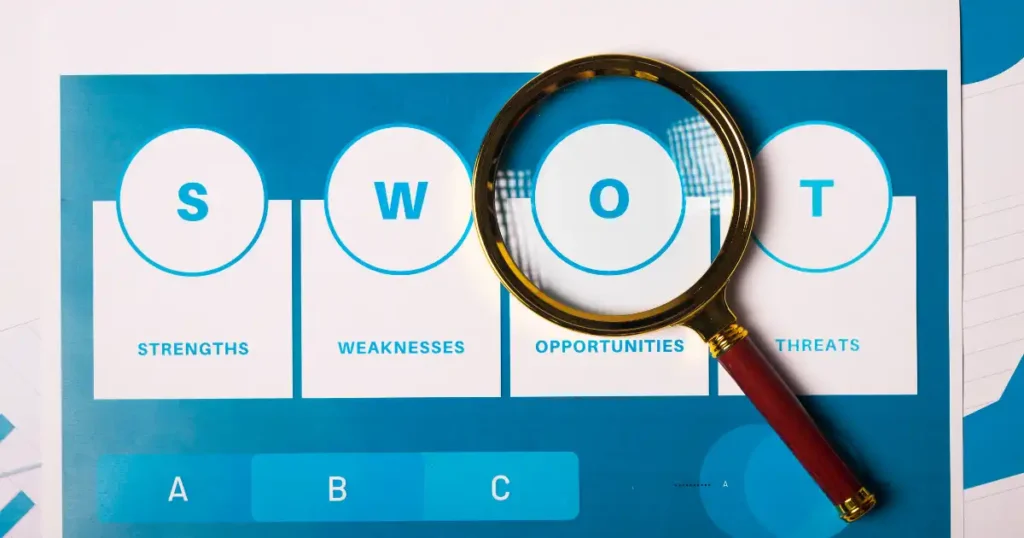Table of Contents
Introduction
In the ever-evolving business landscape, fostering a culture of improvement is not just a competitive advantage, but a necessity for survival. This culture is about a commitment to continuous, incremental enhancements that can lead to significant advancements over time. It’s about constantly questioning the status quo and seeking better ways of doing things.
Effective leadership significantly influences the development and cultivation of this organizational culture. Effective leaders inspire their teams to strive for continuous improvement, creating an environment where innovation thrives. They set the vision, establish the tone, and model the behaviors that drive improvement. In essence, leaders are the architects of the culture of improvement.
This introduction sets the stage for the rest of the article, where we’ll delve deeper into the role of leadership in fostering a culture of improvement. We’ll explore how leaders can effectively communicate expectations, promote collaboration, empower their teams, and more.
Understanding Organizational Culture
Organizational culture is often referred to as the organization’s unique DNA—a blend of values, beliefs, assumptions, and norms that create its distinctive personality. It’s what makes an organization tick. It’s the collection of values, beliefs, assumptions, and norms that guide activity and mindset in an organization.
Related: Proven Methods for Organizational Culture Change
The significance of organizational culture in driving improvement cannot be overstated. A strong, positive culture isn’t just a nice-to-have; it’s a must-have. Leadership acts as the driving force behind employee motivation, influencing work quality and enhancing overall efficiency. This directly influences how employees interact with each other and molds employee perspectives—are they clock-watchers or passionate innovators? In the context of innovation, culture acts as the catalyst that can either nurture a fertile ground for creative ideas or transform an organization into a desolate landscape where rigid adherence to tradition prevails. Effective leadership plays a pivotal role in shaping and influencing this organizational culture.
Leadership plays a crucial role in shaping this culture. Every decision they make, the way they act, and the vision they share have a direct and lasting effect on the way the organization’s culture grows and holds steady. Leaders influence organizational behaviors by nurturing emotional intelligence, exemplifying desired conduct, promoting transparent communication, empowering employees, and building a purpose-driven culture that attracts and retains top talent. In essence, leaders are the architects of the culture of improvement.
Key Components of a Culture of Improvement:

1. Clear Goals and Expectations
Clear goals and expectations are fundamental to a culture of improvement. They provide a sense of focus and direction, enabling team members to prioritize their efforts and allocate their resources effectively. Clarity ensures that everyone is working towards the same outcomes, minimizing confusion and maximizing productivity.
Leadership plays a crucial role in establishing these clear goals and expectations. Leaders must align these with the broader organizational vision. By connecting team goals to the larger picture, leaders create a sense of purpose and coherence, reinforcing the importance of each team member’s role in achieving organizational success.
2. Effective Communication
Open, transparent communication is the lifeblood of a culture of improvement. It’s about sharing information freely and honestly, fostering trust, collaboration, and innovation. Open and transparent communication enhances decision-making, resolves conflicts, mitigates miscommunication, enables constructive feedback, fosters transparency in leadership, and contributes to employee satisfaction and professional growth.
Leadership plays a key role in establishing channels for feedback and encouraging dialogue. Leaders can foster open communication by conducting regular team meetings where everyone can share their opinions and concerns. They can also encourage one-on-one conversations between leaders and team members. Providing anonymous feedback channels, such as suggestion boxes or online surveys, can make it easier for employees to voice their opinions and contribute to the organization’s growth.
3. Collaboration and Teamwork
Collaboration is a dynamic and transformative process that plays a pivotal role in driving innovation and continuous improvement. It involves the collective efforts of individuals, teams, and organizations coming together to share knowledge, resources, and expertise to create novel solutions and achieve common goals. Collaboration fosters exponential growth, exemplified by the network effects that arise when the value of a product or service escalates alongside its expanding user base.Thus, collaboration plays a pivotal role in driving growth and innovation across various industries and sectors.
Leadership plays a crucial role in promoting teamwork and cross-functional collaboration. Leaders can foster a collaborative work environment by breaking down silos and encouraging cross-functional collaboration. They can provide opportunities for team members to work together on projects, share knowledge, and support each other. Leaders can also build a culture of trust and acceptance by listening respectfully to all ideas, getting to know their team, and giving their team permission to fail. Furthermore, they can promote the cross-pollination of ideas by encouraging team members to interact with diverse departments and roles within the organization.
4. Empowerment and Autonomy
Empowering employees to take ownership of improvement initiatives is a powerful strategy for driving innovation and growth. Empowerment involves granting employees the authority, resources, and support they need to make decisions, solve problems, and take ownership of their work. Empowered employees exhibit higher engagement, motivation, and a willingness to exceed expectations. They introduce novel viewpoints, creatively tackle challenges, and actively contribute to fostering a positive organizational culture.
Leadership plays a crucial role in granting autonomy and fostering a culture of accountability. Leaders can foster autonomy by involving team members in decision-making and goal-setting. This not only empowers team members but also promotes a sense of accountability. Leaders can also establish clear expectations and guidelines, provide regular feedback, and encourage collaboration and communication among employees. Furthermore, recognizing and rewarding individuals who demonstrate responsible behavior can promote a culture of accountability.
5. Learning and Development Opportunities
Continuous learning is a cornerstone of success in today’s fast-paced and ever-changing business landscape. It refers to the ongoing process of acquiring knowledge, skills, and insights that enable individuals and organizations to adapt, innovate, and thrive. Continuous learning is not limited to individual development but also extends to organizational learning. Organizations must actively seek opportunities to learn from their experiences, both successes and failures, to improve processes, enhance performance, and drive innovation. Ultimately, continuous learning enables organizations to anticipate changes, stay ahead of the competition, and achieve sustainable growth.
Leadership plays a significant role in supporting employee development and providing learning opportunities. Leaders can support the career goals of their employees by allowing all employees—from the cleaning crew all the way up to the top—to participate in skills training. They can also encourage mentoring and coaching, implement cross-departmental training programs, and continue to look for developmental opportunities. Furthermore, leaders can create a space where employees can imagine what their careers will look like in five to 10 years, ask the question and then be quiet. Now, it’s the leader’s opportunity to actively listen and discern solutions that mutually benefit the organization’s growth while aligning with their own career aspirations.
6. Recognition and Celebration
Acknowledgment and appreciation act as positive reinforcement, encouraging desired behaviors and outcomes, which in turn enhances overall performance. When employees receive recognition for their efforts, they are motivated to excel in their respective roles. Recognition has a strong positive relationship with employee morale, leading to improved performance and productivity. When employees feel valued and appreciated for their hard work and contributions, their morale is boosted, resulting in increased engagement and motivation.
Leadership plays a crucial role in celebrating successes and encouraging improvement efforts. Leaders can send shoutouts via internal messaging systems or during team meetings. They can also encourage peer-to-peer recognition. Recognizing two employees each month or holding a monthly companywide celebration are other strategies that leaders can use to bring out greatness in their teams. Leaders can also be creative in celebrating wins, such as giving small gifts or rewards. Furthermore, leaders can learn from failures and seek lessons that can be applied to future projects.
Related: Components Of A Culture Of Continuous Improvement
Want to change your organizational culture but don’t know the right approach? This is the perfect course for you.
Learn fundamentals, planning, preparations, tools, templates case study, certification and more!
Leadership Approaches for Fostering Improvement:

1. Modeling the Way
Leadership is not just about setting goals and delegating tasks, it’s about inspiring others through one’s own actions. “Modeling the Way” This phrase often symbolizes leading by example, charting a course that inspires others to follow suit. Leaders who embody the values they wish to promote build trust, inspire others, reinforce organizational values, foster collaboration, and drive performance. Their actions serve as a model for their team members to follow, shaping the workplace environment and influencing the overall success of the organization.
Here are some strategies leaders can use to demonstrate commitment, resilience, and integrity:
- Reflect on Your Own Habits: Identify where you allocate your time and your efforts in the workplace. This often reflects your commitment level.
- Strive for Perseverance: It’s essential to recognize the distinction between true commitment and mere interest when pursuing goals.
- Practice Transparent Leadership: Modern employees want to see that your actions mirror what you say.
- Maintain a Relational Approach: Be your team’s voice.
- Make Team Members Feel Valued: This can be achieved by recognizing their efforts and contributions.
- Admit Your Mistakes: This shows humility and fosters a culture of learning and continuous improvement.
- Encourage Teams to Speak Freely: This promotes a culture of open communication and mutual respect.
By embodying these values and strategies, leaders can effectively model the way and foster a culture of improvement.
2. Feedback and Mentorship
Constructive feedback and mentorship are powerful tools for driving improvement. Constructive feedback transforms complaints into opportunities for improvement. It provides valuable insights for improving work processes, products, and services. By actively seeking feedback, you have the opportunity to transform complaints into growth. Feedback fosters a culture of continuous improvement, encouraging innovation and creativity within your organization. Furthermore, feedback serves as a powerful catalyst for organizational transformation, enabling agility in response to evolving market dynamics and maintaining a competitive edge.
As a mentor, delivering impactful feedback to your mentee remains a pivotal aspect of the mentorship dynamic. Constructive feedback empowers your mentee to recognize growth opportunities and areas for improvement. To ensure valuable feedback, prioritize fostering a secure and encouraging environment.
Leadership plays a significant role in providing regular feedback and coaching opportunities. Leaders can foster a culture of continuous improvement by providing timely and specific feedback. They can balance positive and constructive feedback, engage in two-way communication, set clear expectations, encourage growth and development, and follow up and monitor progress. Leaders can also create a culture where feedback flows in both directions, allowing for continuous improvement.
3. Promoting Innovation
Innovation is the lifeblood of any successful organization. It’s about breaking new ground, challenging the status quo, and finding better ways to do things. Leaders play a crucial role in encouraging creativity and fostering a culture of innovation. They set a clear vision, inspire creativity and risk-taking, empower employees to experiment and explore new ideas and lead by example through their own innovative actions and openness to change.
Here are some leadership strategies for promoting risk-taking and experimentation:
- Encourage Employees to Think Outside the Box: Leaders can foster a culture of innovation by encouraging employees to think creatively and challenge the status quo.
- Model Risk-Taking Behavior: Leaders can inspire their teams to take risks by leading by example.
- Normalize Failure: Leaders should create a safe environment where failure is seen as a learning opportunity rather than a setback.
- Promote Continuous Learning: High-performing learning organizations are 92% more likely to innovate. Leaders can foster a culture of continuous learning by communicating and reinforcing continuous improvement as a shared value throughout the organization.
- Foster Trust and Collaboration: Leaders can create a supportive environment by fostering a culture of trust and collaboration among team members.
- Provide Resources and Support: Leaders should provide the necessary resources and support for experimentation.
By implementing these strategies, leaders can effectively promote a culture of innovation and continuous improvement within their organizations.
4. Creating a Shared Vision
A shared vision is a critical component in the journey towards organizational improvement. It serves as a guiding light, providing direction and purpose to all members of the organization. A shared vision is more than a statement; it’s a powerful tool that aligns employees with the organization’s goals and aspirations for improvement.
As a leader, your role in creating and communicating this shared vision is pivotal. You are not just setting the direction; you are inspiring your team to embark on this journey with you. Here are some leadership approaches to involve employees in creating a shared vision for the future:
- Open Dialogue: Encourage open discussions about the organization’s future. This could be through town hall meetings, brainstorming sessions, or one-on-one conversations. The objective is to ensure that each employee experiences active listening and recognizes their value within the organization.
- Inclusive Vision Creation: Involve employees at all levels in the vision creation process. This fosters a sense of ownership and commitment towards the vision.
- Clear Communication: Clearly communicate the vision and its importance to every member of the organization. Use simple, understandable language and provide concrete examples to illustrate the vision.
- Consistent Reinforcement: Regularly reinforce the vision through your actions and decisions. This helps to keep the vision at the forefront of everyone’s mind and guides their daily work.
- Feedback and Adaptation: Be open to feedback and willing to adapt the vision as necessary. This shows your team that you value their input and are flexible in your approach.
A shared vision is not a static statement. It’s a dynamic, evolving guide that should reflect the changing needs and aspirations of your organization and its members. As a leader, your role is to nurture this vision and guide your team towards its realization.
Innovative Leadership Approaches for Improvement:

1. Trust and Vulnerability
Trust and vulnerability are two key elements that can significantly influence the dynamics of a team. They are the bedrock upon which strong and effective leadership is built.
As a leader, building trust is about more than just being reliable or consistent. It’s about creating an environment where people feel safe to be themselves, to express their thoughts and feelings, and to take risks. This is where vulnerability comes into play.
Vulnerability in leadership is about showing your human side. It’s about admitting when you don’t have all the answers, acknowledging your mistakes, and being open about your challenges. When leaders demonstrate vulnerability, it sends a powerful message to their teams: It’s okay to be human, to make mistakes, and to learn from them.
Here are some leadership approaches for fostering a culture of trust and psychological safety:
- Openness and Transparency: Be open about your own challenges and mistakes. This can help to create a culture where it’s safe to take risks and make mistakes.
- Active Listening: Listen carefully to your team’s thoughts and worries. It helps build trust and makes talking easier.
- Empathy and Understanding: Show empathy towards your team’s experiences and emotions. This can help to create a supportive and trusting environment.
- Consistency: Be consistent in your actions and decisions. This can help to build trust over time.
- Encourage Feedback: Encourage your team to give feedback, and be open to receiving it. This can help to foster a culture of continuous improvement and learning.
Trust and vulnerability go hand in hand. By demonstrating vulnerability, you can help to build a strong foundation of trust within your team, paving the way for a culture of improvement and innovation.
2. Passion and Enthusiasm
Passion and enthusiasm are contagious. As a leader, your passion for improvement and enthusiasm for the work at hand can significantly inspire your team’s efforts. When leaders demonstrate genuine excitement about their work, it can motivate employees to strive for excellence and engage more deeply in their tasks.
Here are some leadership strategies for amplifying employee engagement through passion and excitement:
- Lead by Example: Show your passion and enthusiasm in your actions. Your team will likely mirror your energy and commitment.
- Communicate Passionately: Use passionate language when discussing projects and goals. This can help to inspire similar feelings in your team.
- Recognize and Reward Enthusiasm: Acknowledge and appreciate your team’s enthusiasm. This can encourage them to maintain their passion for their work.
- Share Success Stories: Share stories of passion leading to success within the organization. This can inspire your team and show them the power of enthusiasm.
- Encourage Passion Projects: Allow your team members to spend time on projects they are passionate about. This can boost morale and foster a culture of innovation.
As a leader, your passion and enthusiasm can set the tone for your team. By demonstrating your excitement for improvement efforts, you can inspire your team to bring their best selves to their work, fostering a culture of continuous improvement.
3. Prioritizing Organizational Health
Organizational health is a multifaceted concept that encompasses employee well-being, ethical practices, and a sustainable work environment. Prioritizing organizational health is not just about preventing problems; it’s about creating a positive, supportive environment where employees can thrive.
As a leader, your commitment to organizational health can have a profound impact on your team’s morale, productivity, and overall satisfaction. Here are some leadership approaches for fostering a healthy and sustainable work environment:
- Promote Work-Life Balance: Encourage your team to maintain a healthy balance between their work and personal lives. Avoiding burnout and enhancing job satisfaction are benefits of this approach.
- Foster a Positive Work Environment: Create a positive, inclusive work environment where everyone feels valued and respected. This can boost morale and foster a sense of belonging.
- Prioritize Ethical Practices: Uphold high ethical standards in all aspects of your work. This can help to build trust and reinforce your organization’s values.
- Support Employee Well-being: Provide resources and support for employee well-being, such as wellness programs or flexible work arrangements. This can help to improve physical and mental health, leading to increased productivity and job satisfaction.
- Encourage Continuous Learning: Promote a culture of ongoing learning and development. This can help to keep your team engaged and motivated, and it can also contribute to the overall growth and success of your organization.
Related: 12 ideas to improve work performance
Your actions and attitudes can significantly influence the health of your organization. By prioritizing organizational health, you can create a positive, supportive environment where your team can thrive.
4. People-Centric Approach
A people-centric approach to leadership puts the needs, growth, and well-being of employees at the forefront. This approach recognizes that the success of an organization is deeply intertwined with the success of its people.
As a leader, adopting a people-centric approach means prioritizing the development and well-being of your team members. It involves creating an environment where employees feel valued, respected, and empowered to grow. Here are some leadership strategies for valuing and investing in employee development and well-being:
- Personalized Development Plans: Create personalized development plans for each team member. This shows that you value their unique skills and aspirations, and are invested in their growth.
- Open Communication: Foster an environment of open communication. Encourage employees to express their ideas, concerns, and needs. This can help you understand and address their needs more effectively.
- Work-Life Balance: Promote a healthy work-life balance. Recognize that employees have lives outside of work and respect their time and commitments.
- Recognition and Appreciation: Acknowledge and value your team’s hard work consistently. This can boost morale and reinforce the value you place on their work.
- Supportive Environment: Create a supportive environment that encourages learning and growth. Offer resources and chances for ongoing learning and growth.
- Employee Well-being: Prioritize employee well-being. This can be through wellness programs, mental health resources, or simply by fostering a positive and inclusive work culture.
Related: Innovation Leadership: Strategies for Success
Remember, a people-centric approach is not just about policies and programs. It’s about creating a culture where every individual feels valued and supported. As a leader, your actions and attitudes can significantly influence this culture, paving the way for a truly people-centric organization.
The Multifaceted Role of Leadership in Fostering Improvement
Leadership plays a pivotal role in fostering a culture of improvement. It’s not a one-dimensional role but a multifaceted one that requires a deep understanding of various aspects. Let’s dive deeper into these aspects:
- Vision and Direction: Leaders set the path for the organization. They articulate a clear vision and direction that guides improvement efforts. They ensure that everyone understands the organization’s goals and how their work contributes to these goals.
- Communication Mastery: Effective communication is a key leadership skill. Leaders ensure that important information is shared openly and timely. They listen actively, encourage feedback, and foster a culture of open dialogue.
- Cultivating Recognition: Leaders recognize and appreciate the efforts of their team. They celebrate successes, big and small, and use them as opportunities to reinforce the organization’s values and commitment to continuous improvement.
- Empowering Employees: Leaders empower their team members. They delegate authority, provide the resources needed for success, and trust their team to take ownership of their work. This cultivates a feeling of duty and dedication among employees.
- Commitment to Development: Leaders are committed to the development of their team. They provide learning opportunities, mentorship, and constructive feedback. They foster a culture of continuous learning and growth.
- Harmonizing Work-Life: Leaders understand the importance of work-life balance. They respect their team’s time outside of work and promote practices that support a healthy balance between work and personal life.
- Navigating Conflicts: Leaders are skilled at navigating conflicts. They address issues head-on and facilitate constructive resolution. They foster a culture of respect and understanding, where differing opinions are valued and conflicts are seen as opportunities for growth.
In conclusion, leadership in fostering improvement is multifaceted and requires a deep understanding of these various aspects. By mastering these, leaders can effectively foster a culture of continuous improvement in their organizations.
Conclusion
In the journey towards fostering a culture of improvement, leadership plays a pivotal role. Leaders are not just decision-makers or managers; they are visionaries, communicators, and mentors who shape the organizational culture and drive continuous improvement efforts.
The critical role of leadership in influencing organizational culture cannot be emphasized enough. A leader’s actions, attitudes, and values set the tone for the entire organization. They influence how employees perceive their work, interact with each other, and engage with improvement initiatives.
Leadership in fostering a culture of improvement is multifaceted. It involves setting a clear vision, communicating effectively, recognizing efforts, empowering employees, committing to their development, harmonizing work-life balance, and navigating conflicts. Each of these aspects plays a critical role in creating an environment where continuous improvement can thrive.
However, the most effective leaders are those who are willing to embrace innovative approaches and continuously evolve their leadership style. They understand that improvement is not a destination but a journey, and they are committed to learning, growing, and adapting along the way.
As we move forward in an ever-changing business landscape, the need for effective leadership in fostering a culture of improvement becomes increasingly important. Leaders who prioritize organizational health, adopt a people-centric approach, and demonstrate passion, trust, and vulnerability will be better equipped to guide their organizations towards continuous improvement.
So, to all the leaders out there, I encourage you to embrace this journey of continuous improvement. Remember, your actions and attitudes can significantly influence the culture of your organization. So, lead with passion, lead with empathy, and most importantly, lead with a commitment to improvement.
FAQs
1. How does leadership influence organizational culture and improvement efforts?
Leadership plays a pivotal role in shaping organizational culture and driving improvement efforts. Leaders set the tone for the entire organization through their actions, attitudes, and values. They articulate a clear vision, communicate effectively, recognize efforts, empower employees, commit to their development, harmonize work-life balance, and navigate conflicts. All these actions influence how employees perceive their work, interact with each other, and engage with improvement initiatives.
2. What are some effective leadership approaches for fostering a culture of improvement?
Effective leadership approaches for fostering a culture of improvement include setting a clear vision and direction, mastering communication, cultivating recognition, empowering employees, committing to development, harmonizing work-life, and navigating conflicts. Additionally, leaders can foster a culture of improvement by prioritizing organizational health, adopting a people-centric approach, and demonstrating passion, trust, and vulnerability.
3. How can leaders promote innovation and creativity in organizations?
Leaders can promote innovation and creativity in organizations by creating an environment that encourages risk-taking and experimentation. This includes fostering open communication, encouraging feedback, providing learning opportunities, and recognizing and rewarding innovative ideas. Leaders can also promote innovation by allowing employees to work on projects they are passionate about, thereby boosting morale and fostering a culture of innovation.







